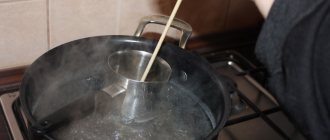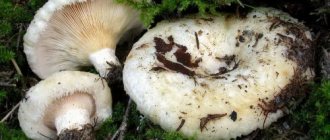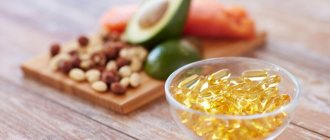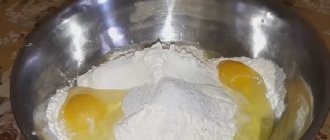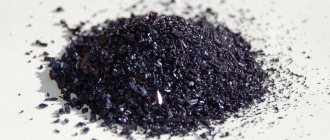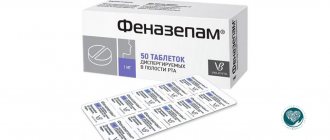Badger fat is a valuable traditional medicine. Due to the badger's ability to hibernate, badger fat contains a unique composition of substances, including fatty acids, vitamins and minerals. Badger fat is a kind of natural antibiotic, immunomodulator and antiseptic. Badger fat is used to treat various diseases: colds, infections, respiratory diseases, gastrointestinal diseases, skin diseases, as well as for the prevention and enhancement of immunity. Badger fat is taken orally in its pure form, with milk or honey, and rubs, compresses, ointments and balms are made.
What is badger fat
The unique medicinal properties of badger fat are associated with the badger’s ability to hibernate, while being in a state similar to suspended animation. During hibernation, badgers receive energy from the accumulated reserves of subcutaneous and internal fat. In addition to fats, the badger’s body requires fatty acids, vitamins, minerals and other substances for normal functioning, all of which are contained in badger fat. Thanks to the whole complex of substances contained in badger fat, it is a kind of natural antibiotic, immunomodulator and antiseptic. Using badger fat as a medicine, you can strengthen the immune system, increase the speed of metabolic processes, and treat a number of serious diseases.
Composition of badger fat
Badger fat contains 99.8 grams of fat per 100 grams of product, does not contain proteins or carbohydrates, the calorie content of badger fat is 898.2 kcal.
Badger fat contains:
- Unsaturated and polyunsaturated fatty acids (Omega-3, Omega-6 and Omega-9), which have a positive effect on the functioning of the brain, central nervous system, and heart. Unsaturated and polyunsaturated fatty acids have antioxidant and anti-inflammatory effects, improve the condition of the skin, improve metabolism, are useful for pregnant and lactating women. According to some scientists, they are oncoprotectors.
- Linolenic and linoleic acids activate the body's immune defense, enhance metabolic processes, strengthen the cell membrane, and improve the condition of the epidermis.
- Vitamin A (retinol) stimulates tissue regeneration, promotes the production of keratin and collagen, improves skin condition, increasing its elasticity, and improves immunity.
- Vitamin E (alpha-tocopherol) is a strong antioxidant, affects cell regeneration, has a beneficial effect on the healing of wounds and injuries, takes part in the regulation of the synthesis of steroid hormones, promotes rejuvenation of the body, and relieves inflammatory processes.
- B vitamins (thiamine, pyridoxine, niacin and others) ensure the proper functioning of carbohydrate, protein and fat metabolism, help strengthen nerve cells, absorb oxygen, increase the elasticity of cell membranes, support immunity, and stimulate hematopoiesis. Vitamin B5 (pantothenic acid) helps wound healing. Vitamin B2 (riboflavin) improves the condition of nails, skin and hair, and supports vision. Vitamin B9 (folic acid) promotes the growth of blood cells and improves immunity.
- Minerals increase immunity, help stabilize metabolic processes and improve the body's performance.
What is badger fat made of?
During hibernation, wild animals feed exclusively on their own subcutaneous fat, as it contains substances necessary for life:
- Linoleic and linolenic polyunsaturated fatty acids. These fatty acids enter the body with food. Thanks to them, sugar levels and carbohydrate metabolism are normalized, and inflammation is reduced. Deficiency leads to increased cholesterol and atherosclerosis in the blood.
- Omega-9 (oleic acid). It prevents the growth of tumors, removes cholesterol, helps the body produce antioxidants and repairs damaged tissue.
- Vitamins A and B. This group of substances strengthens the immune system, replenishes energy, slows down destructive processes, restores vision and strengthens the skeletal system.
- Minerals.
- Micro and macro elements.
How is badger fat prepared?
Hunters get badger fat from the badgers they hunt. Badger hunting is carried out in the fall, from September to early November, when the badger has already gained healing fat over the summer, but has not yet hibernated in its hole. The hunter removes the skin from the hunted badger and carefully cuts off the subcutaneous and internal fat. The fat is then melted in a water bath to separate the pure fat from the fibers.
How to melt badger fat at home
Before using badger fat for medicinal purposes, it must be melted. Badger lard is crushed into small cubes, placed in a container in which the firebox will be kept, and it is placed in another pan with water, thus creating a water bath. During heating, pure badger fat will begin to be released from the cut cubes and they will begin to decrease in size. The melted mass is filtered and distributed into jars in which it will be stored.
Types of badger fat (about rendered and mixed)
Badger fat can be rendered or mixed. The principle of obtaining both is the same, the only difference is where this fat is removed from. There is subcutaneous fat, it is located directly under the skin and is removed in layers. Internal fat envelops the internal organs like a mesh and must be removed very carefully and quickly, especially from the intestinal loops, so as not to become saturated with an unpleasant odor. And layers of fat between the muscle tissues of the animal.
Rendered fat is obtained from subcutaneous lard, and mixed fat is a mixture of three types of lard. Mixed fat contains more useful substances, but it is also more troublesome and longer to make. Every hunter knows how to burn badger fat, but not everyone does it correctly and efficiently.
Medicinal properties of badger fat
- The main medicinal property of badger fat is manifested in the treatment of respiratory diseases: acute respiratory infections, inflammation of the mucous membranes of the larynx and pharynx, laryngitis, acute and chronic bronchitis, tracheitis, bronchial asthma, pneumonia, tuberculosis. When treating diseases of the respiratory system, badger fat suppresses the pathogenic microflora of the lungs and bronchi, ensures effective removal of sputum, promotes rapid cleansing of the respiratory tract, and effectively relieves wet and dry cough.
- Badger fat, thanks to its enveloping and anti-inflammatory properties, helps treat diseases of the gastrointestinal tract: gastritis, stomach and duodenal ulcers, acute and chronic intestinal inflammation.
- Badger fat is a good way to restore the body's defenses after injuries, serious illnesses, and operations. Badger fat helps to compensate for the deficiency of macro- and microelements and provide the body with valuable nutrients.
- Badger fat is used to create ointments used to treat skin injuries: open wounds, scratches, abrasions, chemical, thermal and sunburns, frostbite, stretch marks, allergic and bacterial rashes. Badger fat increases tissue regeneration, destroys areas of inflammation and harmful microbes, which promotes rapid healing of wounds.
- Badger fat can be used in the treatment of male and female diseases: colpitis, cervical erosions, vaginal injuries, prostate inflammation.
- Badger fat is used in the treatment of diseases of the immune system: diabetes, atopic dermatitis, primary immunodeficiency, thyroid pathologies.
- Badger fat helps in the treatment of diseases of the cardiovascular system: thrombophlebitis, hemorrhoids, varicose veins, acute heart failure, coronary heart disease, as well as kidney diseases: cystitis, acute and chronic pyelonephritis.
- Badger fat is used to treat diseases of the musculoskeletal system: diseases and injuries of the joints, osteoporosis, arthritis, bursitis and radiculitis.
How is badger fat useful - what does it help with?
The ability of organic acids to impart bactericidal properties to products and help with diseases of the cardiovascular system is known. Taking “beauty vitamins” A and E is beneficial and dramatically improves the condition of the skin and hair, and many doctors seriously consider oleic acid as one of the substances that can prevent the appearance and development of oncology. Badger fat has long been successfully used in the treatment of colds, atherosclerosis, stomach and intestinal diseases, as well as severe pulmonary ailments, including pneumonia, asthma, pleurisy and tuberculosis.
Even representatives of traditional medicine, many of whom are prejudiced against almost all “folk” remedies, recognize the real benefits of taking this healing fat for the health of people with weakened immunity and general exhaustion of the body. Clinical studies have confirmed that badger subcutaneous fat lowers blood pressure, stabilizes hormonal levels, increases potency in men and helps women with reproductive system dysfunctions.
Contraindications to the use of badger fat
Before using badger fat to treat diseases, you should familiarize yourself with the contraindications for its use:
- It is not recommended to take badger fat during pregnancy and nursing mothers.
- Badger fat is not given orally to children under three years of age; rubbing with badger fat can be done.
- You should not take badger fat during exacerbations of cholelithiasis, gallbladder diseases, biliary tract diseases, and acute pancreatitis.
- You should not take badger fat in severe forms of gastritis, exacerbations of gastric and duodenal ulcers, pancreatic diseases, and liver diseases.
- Some people have an individual intolerance to badger fat; they may even experience an allergic reaction when taking it. An allergy to badger fat is extremely rare, but it still happens, therefore, when using badger fat for the first time, you should use the minimum dose of the drug and carefully listen to the body’s reaction to it. If an allergic reaction occurs, you should stop using badger fat and consult a doctor.
Before using badger fat for the first time for treatment, be sure to contact your doctor and consult with him about the optimal course of treatment and whether you have any contraindications to treatment with badger fat. It should be remembered that the best and most proven medicinal drugs cannot completely replace the medications prescribed by a doctor; be sure to coordinate your treatment with him.
Treatment of diseases with badger fat
Use of badger fat for cough and bronchitis
Badger fat has been used for a long time to treat coughs and bronchitis. There are several ways to take badger fat to treat cough:
- To reduce cough and relieve inflammation, you should consume two teaspoons of badger fat three times a day before meals, washed down with warm milk or herbal decoction.
- Dissolve one teaspoon of badger fat in a glass of heated milk and drink warm.
- You can melt 100 grams of butter and 2-3 tablespoons of badger fat in a water bath, add 40 grams of cocoa powder and mix well. You can add sugar and grated chocolate to the resulting mixture. The resulting product is consumed 2-3 times a day with tea or rosehip decoction.
- Mix one tablespoon of badger fat with cognac and honey, heat in a water bath to a temperature of 40 degrees. Use warmed before bedtime.
The use of badger fat for pneumonia
Badger fat is used to treat lung diseases, including pneumonia. To treat pneumonia, badger fat can be taken orally or given as a therapeutic rub.
- For oral administration, badger fat is mixed with honey in equal proportions, heated in a water bath, mixed thoroughly until a homogeneous mass is obtained. Take 3 times a day, 5 ml.
- Therapeutic rubbing is performed only if the patient does not have a fever. For therapeutic rubbing, the patient’s chest and back are coated with badger fat, warmed to room temperature, and lightly rubbed. Badger fat should not be applied to the heart area. The patient is dressed in warm clothes and covered with a warm blanket or rug. This treatment is carried out until the symptoms of the disease disappear completely.
- At a fever, you can rub badger fat on the patient’s feet, heated to room temperature, then put woolen socks on them.
Badger fat and milk for children with cough
Badger fat can be given orally to children once they reach at least 3 years of age. Badger fat is given to children mixed with milk in order to eliminate the specific taste and smell of badger fat.
The dosage depends on the age of the child:
- From 3 to 5 years – 1/3 teaspoon
- From 5 to 10 years – 1/2 teaspoon
- From 10 to 14 years – 1 teaspoon
- From 14 years and older - 1 dessert spoon
Badger fat with milk is given to children three times a day, half an hour before meals, for two weeks. Taking badger fat with milk allows you to quickly remove phlegm and completely eliminate cough. Before treating children with badger fat, you should definitely consult a qualified pediatrician about the dosage and treatment regimen.
Using badger fat to rub baby's skin
Badger fat can be used to rub a child's skin for colds, upper respiratory tract diseases, coughs, bronchitis, and pneumonia. Badger fat in the form of a rub improves blood circulation, which has a positive effect on the condition of the entire body.
When treating a child with rubbing, you need to follow several rules:
- Do not use rubbing if the child has a fever. If you have even a slight fever, you should avoid rubbing with badger fat, as this will only lead to a worsening of the child’s condition.
- Badger fat for grinding should have a temperature of 20-25 degrees. You need to take the badger fat out of the refrigerator in advance and keep it at room temperature for several hours.
- Before using badger fat for the first time for treatment, you need to check the child for allergies; to do this, apply a small amount of badger fat to the child’s skin and wait for 15-20 minutes. If there is no allergic reaction, you can proceed directly to rubbing
- Do not apply badger fat to the heart area or to too large an area of skin.
- Badger fat is applied to the child's chest and back, lightly rubbed in, the child is dressed in warm clothes and covered with a warm blanket.
Use of badger fat for tuberculosis
Tuberculosis is a serious disease that must be treated under medical supervision. Badger fat can be considered as an addition to the medications prescribed by your doctor.
For tuberculosis, it is recommended to prepare the following remedy: mix 100 grams of crushed aloe leaves with 400 grams of honey, add 40 grams of birch buds and 30 grams of linden flowers, pour boiling water over it all and let it brew for an hour, then strain and add 200 grams of badger fat. Take 5 ml 3 times a day with warm milk or rosehip decoction, store the prepared product in the refrigerator.
Using badger fat to prevent colds and improve immunity
Many people use badger fat as a preventative against colds. The use of badger fat for prevention is especially effective twice a year: in spring and autumn, when there is an increase in the number of cases of ARVI.
There are several ways to take badger fat to prevent diseases and improve immunity:
- One tablespoon for adults and one teaspoon twice a day, half an hour before meals. The course of treatment lasts two weeks.
- You can mix badger fat, dried fruits, candied fruits, nuts in equal parts and consume one tablespoon before meals twice a day. The course of treatment lasts one month.
- When taking badger fat in capsule form, adults and children over 14 years old should take 5 capsules three times a day. The course of treatment is carried out twice a year, the duration of the course is 30-45 days.
For hemorrhoids
Badger fat can be used to treat hemorrhoids in the early stages. In order to make candles from badger fat, cooled badger fat is taken in a volume of about 1 teaspoon and shaped accordingly. Treatment is carried out 3 times a day, the candles are stored in the refrigerator.
Asthma treatment
To treat asthma, badger fat is used in the form of rubbing. Badger fat is applied to the chest before going to bed, with the exception of the heart area. The chest is covered with a warm blanket. Additionally, badger fat is consumed orally after waking up, 1 tablespoon, an hour before meals. Duration of treatment is 2 weeks.
For varicose veins
Badger fat is used to treat varicose veins; for this purpose, it is applied in its pure form to the skin of the legs, especially in those places where there are varicose veins. The legs are wrapped in thick cloth and left in this state for several hours.
For heart disease
Badger fat is used to prevent and treat heart disease. Consuming badger fat leads to the enrichment of the human body with fatty acids, vitamins A, E and B. You need to take 1 tablespoon three times a day. The course of treatment is 2-3 weeks.
Gastrointestinal diseases
Badger fat has a wound-healing, anti-inflammatory and enveloping effect and is used to treat various diseases of the gastrointestinal tract. Badger fat is mixed in equal parts with aloe juice and taken 1-2 tablespoons half an hour before meals. The course of treatment is 2 weeks. Aloe juice has an antibacterial effect, improves bile flow and reduces acidity. Taking aloe juice and badger fat together helps get rid of heartburn, gastritis and other gastrointestinal problems.
Badger fat for diseases of the musculoskeletal system, joint diseases
Badger fat is used to treat diseases of the musculoskeletal system and joints; it helps patients well with injuries, bruises, sprains, bursitis, myositis, radiculitis, arthritis, gonarthrosis, osteochondrosis and spinal hernias. For all these diseases, the patient is prescribed rubbing and compresses with badger fat in the form of an ointment. Badger fat relieves pain, swelling, inflammation, improves metabolism and blood flow, increases the elasticity of ligaments and muscles.
Badger fat for healthy skin
Badger fat is used to treat skin diseases and improve skin condition. Badger fat helps with skin suppuration, rashes, psoriasis, dermatitis, eczema, and copes with the healing of wounds, scratches, abrasions, burns, frostbite. It relieves swelling and inflammation well, promotes cell regeneration, and makes the skin more elastic. To treat skin diseases, you can mix equal parts of badger fat, vodka and pharmaceutical glycerin. This composition has a wound healing and anti-inflammatory effect. To get rid of acne, dryness and sagging skin, you can mix badger fat, egg yolk and water. This composition, applied to the skin, makes it more elastic and gives it a healthy appearance.
Badger fat for burns and frostbite
Badger fat is used to treat burns, but many people use it incorrectly. At the time of the burn and immediately after it, no fats need to be applied to the burned surface of the skin. Badger fat is applied in a thin layer to the burn after the healing process has begun. Badger fat prevents scarring. When treating frostbite with badger fat, first rub the body of a person who has suffered hypothermia in order to restore blood circulation, then you can rub a little badger fat onto the frostbitten part of the body and rub it well.
Badger fat in cosmetology
Badger fat is actively used in cosmetology. It is included in masks, creams, scrubs, shampoos and even lipstick. Badger fat nourishes, softens and moisturizes the skin of the face and body. You can prepare environmentally friendly cosmetics at home by mixing badger fat with beeswax, essential oils, decoctions of medicinal plants, and honey.
For face
Badger fat is used in cosmetology to prepare face masks.
- To prepare a nourishing face mask, badger fat is mixed with fish oil and honey, the mixture is heated in a water bath and mixed thoroughly. The mask is applied to the face for 15 minutes, after which the remaining mask is removed with a cotton pad and washed with warm water.
- For a rejuvenating face mask, add rosehip oil, honey, and one egg yolk to badger fat. The mask is applied to the face for 15 minutes, the remnants of the mask are removed from the face and washed thoroughly with warm running water.
- To prepare a nourishing and softening mask, badger fat is mixed with beeswax and almond oil. The mask is applied to the face for 15 minutes, the remaining mask is removed with a cotton pad and washed with running water.
Restoring hair health
Badger fat is used to promote hair health and combat hair loss.
To strengthen hair, a composition is prepared from badger fat, burdock oil, onion juice and honey. This composition is rubbed into the scalp, at the roots of the hair, with massaging movements, after which the head is covered with plastic wrap to create a greenhouse effect. This procedure needs to be performed 1-2 times a month.
Application in massage
Badger fat is used for classical, therapeutic and sports massage. A few grams of badger fat are applied to an area of skin, then rubbed into the skin with light massage movements. Fat penetrates into the deeper layers of the skin, giving it a healthy, more youthful appearance.
Useful tips for treatment with badger fat
Treatment with badger fat
If you have not yet decided how best to take badger fat, you can use the classic scheme:
- take 200 g of fresh rendered fat;
- heat and mix it with cocoa powder 6 g;
- add 1 tablespoon of honey;
- mix everything well
- transfer to a glass jar and store in the refrigerator.
Especially for you, we have also prepared useful tips for treating with badger fat:
- If you can’t have milk, then make yourself “medicinal” cupcakes or sandwiches and wash it down with hot herbal tea.
- For lung diseases you need to take 1-3 tbsp. spoons 4 times a day on an empty stomach for a month, or even two or three. I strongly recommend taking it together with tinctures of beaver stream and musk deer musk.
- Some healers advise taking a homemade medicine whose composition is: 200 g of badger fat + 100 g of honey + 50 g of aloe, mix and take one tablespoon 4 times a day half an hour before meals.
- For those with a sweet tooth, this option would be optimal: natural chocolate can be melted with cocoa, butter and badger fat. Keep in a water bath for a while and transfer to a used jar. In this version, it can be regularly consumed for breakfast, washed down with aromatic herbal tea.
In conclusion, I would like to say that the best, most effective and efficient way to use badger fat is in its pure form. Therefore, if you are overcome by an insidious illness, or you just want to be prepared for the cold - take a natural product, treat yourself and your relatives and be healthy!
Where to buy badger fat
There are several ways to purchase badger fat, each of which has its own advantages and disadvantages.
- Hunters who hunt badgers and sell badger fat
- In the online store
- In pharmacies, badger fat can be sold in the form of different dosage forms: balm, cream, ointment, capsules. Products sold in pharmacies must be accompanied by instructions indicating how to use this medicine.
No matter who you buy badger fat from, it is important that this seller has a good reputation and there are many good reviews about him. Unscrupulous sellers may add preservatives, flavors and dyes to expired substandard badger fat. The most unscrupulous of unscrupulous sellers may even sell rendered lard under the guise of badger fat. Treatment with such a drug will naturally not bring any health benefits. In many preparations sold in pharmacies under the guise of badger fat, the percentage of natural badger fat is at best 20%, and often only 5%, and the rest is ordinary animal fats.
When buying badger fat, you need to know how to distinguish a high-quality natural product from a fake.
- Badger fat should not smell rotten, sour or have any strong foreign odors.
- Badger fat should not have a rancid taste.
- The color of badger fat should be milky white, cream or slightly beige, without strong yellowness.
- The fat should have a uniform consistency, without clots or lumps.
- At room temperature it should not melt or spread across the bottom of the container.
- When stored in the refrigerator, badger fat should solidify and become solid.
Authentication methods
The most accurate way to check is to take the fat to a laboratory and check its composition. You can buy it from fellow hunters. Take a piece of solid fat in your hand and it will immediately begin to melt; if it does not melt, then you are being misled. See what the fat looks like, what it smells like, taste it and draw conclusions about the quality of the product offered.
Appearance of badger fat
The color of proper badger fat ranges from pure white to cream. It depends on the animal’s habitat and its diet. When a badger lives in the fields, its fat is more liquid and yellow. Forest and taiga inhabitants have white and thick fat.
If you are offered dark liquid fat, then you are not being deceived; it is badger fat, but it is not prepared correctly. If a hunter is in a hurry and quickly fries the fat in a frying pan at a high temperature, then it will turn out to be similar to drying oil and will not be of any use. Badger fat is similar in density to Vaseline.
During storage, fat may become clearer on top and denser at the bottom, this is due to different acid densities, just stir it before use. If stains of a different color or mold appear in the fat, then such fat cannot be used categorically.
Badger fat close up
The smell of badger fat
Good fat does not have any special strong odor. Any unpleasant smell of rot, mold, mustiness, or old rancid fat should alert you. Refuse to purchase. Fresh badger fat can also have an unpleasant odor if it is not carefully removed from the intestines and poorly washed.
Taste of badger fat
Badger fat tastes softer than lard and does not cause any rejection. If a specific sharp taste and smell appears, it means that some deviations occurred during manufacturing or storage. You should be careful when purchasing.
Storing badger fat
To preserve the beneficial medicinal properties of badger fat, it must be stored properly. Badger fat should be stored in jars with tight-fitting lids in a cool, dark place. The storage temperature of badger fat should be no more than 4 degrees. Avoid overheating and exposure to sunlight. Access of oxygen to the product must be limited, so the lid of the container in which it is stored must be tightly closed. It is best to store badger fat in glass containers; when stored in plastic containers, the shelf life should not exceed 2 years.
If necessary, you can freeze badger fat in the freezer, but do not allow frequent temperature changes. Do not store strong-smelling substances near badger fat. It is best to store badger fat in the refrigerator. When badger fat is stored at room temperature, oxidative processes begin to occur in it, it loses its beneficial medicinal properties and, when taken orally, can even cause food poisoning. Medicines based on badger fat should be stored in original packaging according to the instructions attached to them.
Bear and badger fat
Bear fat has not been specifically studied by official medicine, although it, like the fat of other wild animals, has long been considered an effective remedy in folk medicine in many regions - Siberia, the Far East, Buryatia, China, Tibet and others. It is used mainly to treat various diseases of the lungs, respiratory tract, various skin diseases, wounds and burns. It is also used as a general tonic (Maltsev, 1989). Therefore, many hunters prepare bear fat for their own needs.
From one medium-sized brown bear you can get up to 20-30 kg of fat. In practice, a distinction is made between subcutaneous fat (fat) and internal fat. Bear fat is pure white, sometimes with a slight yellowish tint, and fusible. During storage, the melted fat is divided into two fractions - liquid (upper) and thicker (lower). It is very important to skillfully prepare bear fat. When removing a skin, you should try to leave as little fat (and a lot of cuts) on the skin as possible: this, on the one hand, will increase the yield of fat, and on the other hand, it will make the initial processing and dressing of the skin easier in the future. After skinning and gutting the bear, carefully separate all the internal fat from the carcass and entrails with your fingers and immediately lower it into a bowl of cold water. Soaking in it continues until the water being replaced remains clear. The internal fat is then cut into small pieces, placed in a pan, which is placed in another (larger) pan of boiling water (water bath) and boiled until all the fat pieces are completely melted. To make rendering the fat easier, you can first pass it through a meat grinder. You can heat it without a water bath, but over low heat. At the end of rendering, the fat is poured through cheesecloth into bottles or jars. For long-term storage, they are well sealed or rolled up with canning lids. You can do the same with subcutaneous fat (lard), but since it has a denser consistency than internal fat, some hunters salt it like lard. To do this, it is cut off from the carcass in layers, cut into large pieces of equal sizes and placed in a small wooden or plywood box. In this case, each layer is generously sprinkled with salt. After two days, rub it again with salt and fill all the free space between the pieces with it. For every 10 kg of lard, take at least 1 kg of salt. The box is taken out to a dark, cool and dry room. In winter, it is better to keep lard in the cold. For longer storage, as well as for the summer, lard can be placed in 3-liter glass jars, sealed with canning lids and placed in the refrigerator or cellar. In this state, bear lard can be stored for at least two years.
Treatment of tuberculosis.
Cut out the internal fat from the bear carcass and process it as described above. Add milk in equal proportions to bear fat melted over low heat and boil. Drink this mixture for two months. The dose at the beginning of treatment is one eighth of a glass. Towards the end of treatment, gradually increase the dose to one glass per day. For the purpose of prevention, such treatment should be carried out 1-2 times a year (G. Kovalevich, 1992).
Ancient Russian recipes recommend the use of bear and badger fat to improve hearing. To do this, make a mixture of bear (or badger) fat with chicken (the proportion is unknown) and mix with onion juice, after which a few drops are instilled into the ear, repeating for several days until hearing improves. When treating inflammation of the lungs and upper respiratory tract, bear fat is drunk in the same way as when treating tuberculosis. You can add honey to the mixture of fat and milk to taste. Take until recovery.
When treating wounds, burns, scratches and other damage to the skin, internal bear fat is applied in a thin layer to the damaged areas of the body and repeated several times until healing. When treating wounds, you can use an old Russian recipe (Paracelsus ointment): take 1 pound of wild pig fat, 1 pound of bear fat and boil them in red wine. Then pour it into a bowl with cold water, after cooling, scoop out the mixture with a spoon and add to it 1/8 of a lot of bone chikhritsa, red sandalwood and bloodstone powder. Wounds are treated with this ointment several times until healing. All of the above about bear fat can rightfully be attributed to badger fat. Although these animals belong to different families of the order of predators, their biology has many similarities: omnivorous diet, hibernation, the need to deposit significant fat reserves for the winter, etc. Official medicine has also not studied badger fat as a medicinal agent, but some doctors recommend it for in some cases for patients. Badger fat is considered an effective folk medicine in many regions, but is especially valued in Russia (Siberia, Far East, etc.). It is used to treat various diseases of the lungs, bronchi, upper respiratory tract, colds, various skin diseases, to accelerate the healing of wounds, frostbite and burns. It can also be used as a general tonic. Thus, the range of actions of badger fat is almost the same as that of bear fat, only its action itself is milder. Procurement organizations do not accept badger fat, so many hunters prepare it for their own needs.
In the field, you can get at least 1 kg of fat from one medium-sized badger. According to V.G. Yudin, under cellular conditions, the fat yield is almost 2 times greater - up to 2 kg. Badger fat has a faint amber-yellowish color, sometimes reminiscent of the color of linden honey, and is more melting than that of a bear. The subcutaneous fat of a badger differs from the internal fat to a lesser extent than that of a bear, although during storage after rendering it is also divided into two fractions - liquid (upper) and thicker (lower). There is no clear boundary between them. A badger, unlike a bear, has a lot of intermuscular fat, which is almost impossible to separate. Some hunters make stew from badger meat; during long-term cooking of the meat, part of the intermuscular fat is separated and collected at the top. It is carefully collected and combined with the fat that was obtained during the butchering of the animal. The remaining amount of intermuscular fat is quite enough to produce high-quality canned food. The subcutaneous fat of a badger is very heavily penetrated by subcutaneous tissue, so the skins must be degreased very carefully. The preparation of badger fat is similar to that of bear fat (see above). The rendered fat is poured through 2 layers of gauze into bottles or glass jars and sealed well with cork or polyethylene stoppers and placed in a refrigerator or cold cellar. Badger fat can be stored for up to 2 years without changing its organoleptic characteristics. Traditional Russian medicine recommends using badger fat according to the same recipes as described above for bear fat. Some hunters recommend using a mixture of badger and bear fat, believing that it acts even more radically. Badger fat can also be used for cooking like regular edible fats - in this case it acts as a general tonic. “Siberian Fishery” No. 1 1996
How to take badger fat
Ingestion
For many diseases, it is recommended to take badger fat orally. It is worth considering that badger fat in its pure form, due to its taste and smell, can cause unpleasant sensations when taken orally. Therefore, if desired, you can either take badger fat in capsule form, or mix badger fat with milk, honey, jam or fruit puree before taking it. Badger fat from the refrigerator should be allowed to warm to room temperature before use.
When taking badger fat orally, the following dosages should be observed:
- Children under 3 years of age are not recommended to take badger fat internally.
- Children aged 3 to 5 years – 1/3 teaspoon
- Children aged 5 to 10 years – 1/2 teaspoon
- Children aged 10 to 14 years – 1 teaspoon
- Children aged 14 years and older - 1 dessert spoon
- Adults up to 90 kg – 1 dessert spoon
- Adults 90-100 kg and more - 1 tablespoon
Badger fat should be taken 30-60 minutes before meals, up to 3 times a day. The duration of treatment depends on the disease, the patient's condition and other factors and is usually about 2 weeks. It is not recommended to take badger fat for more than 1 month in a row.
Before treatment with badger fat, you should definitely consult with your doctor about the dosage and duration of treatment with badger fat.
Badger fat with milk
Children and some adults may not like the taste and smell of badger fat, in which case it can be taken orally with milk. Badger fat is taken with milk for dry and wet coughs, laryngitis, bronchitis and pneumonia.
To take badger fat with milk, heat a glass of milk until warm, add 1 tablespoon of melted badger fat to the milk, mix thoroughly until the fat is completely dissolved in the milk. Drink hot immediately after preparation. If desired, you can add cocoa, sugar, honey or jam to the milk for taste.
Badger fat with honey
To enhance the healing effect, badger fat is often mixed with honey. This medicinal mixture has a warming effect and helps with dry coughs, relieving the lungs of accumulated phlegm. To prepare the medicinal composition, add half a tablespoon of honey to 1 tablespoon of melted badger fat and mix thoroughly until smooth. The medicinal composition is taken immediately after preparation.
Badger fat with bread
The unpleasant taste and smell of badger fat can even cause a gag reflex in a child. In order to give badger fat to your child, you can spread melted badger fat on bread and spread fruit preserves, marmalade or pate on top of it. You can give your child to wash down this sandwich with warm milk and honey.
Rubbing
Badger fat is often used for rubbing. Rubbing with badger fat helps a lot with dry and wet coughs; they increase blood flow and help warm up the tissues. Therapeutic rubbing is performed only if the patient does not have a fever. Most often, fat is applied to the chest, back, feet and neck. Badger fat should not be applied to the heart area. Badger fat from the refrigerator should be allowed to warm to room temperature before grinding. After applying the fat to the skin, it is rubbed into the skin with light massaging movements. Then they put a T-shirt or pajamas on the patient and wrap them in a blanket. Some traditional healers recommend wearing a dog belt or a goat hair scarf after rubbing with badger fat. Most often, rubbing with badger fat is done before bed. For wet coughs, to increase the therapeutic effect, rubbing is supplemented by taking badger fat orally.
Compresses
Compresses with badger fat are often used to treat coughs. After such treatment, sputum clears well, inflammation is relieved, and the patient’s general condition improves. Compresses should not be given to a patient with a fever.
To prepare a compress, mix 1-2 tablespoons of badger fat, 2-3 tablespoons of vodka or alcohol and 2 tablespoons of honey in an enamel bowl. All this is mixed until a homogeneous mass is obtained. Cloth or gauze is smeared with the resulting medicinal mixture and applied to the desired location. Place plastic wrap over the compress and cover with a warm blanket. The compress is kept on the patient’s body for about 4 hours.
The effect of badger fat on diseases of the spine
Having problems with the spine
? Then you should resort to a proven remedy using badger fat. It relieves pain, relieves swelling, and increases range of motion. This is the remedy that truly helps a sore spine.
The benefits of badger fat for the body
The advantage of an animal product is that it perfectly helps with back diseases due to its rich composition, because it contains acids and vitamins necessary for tissues. The badger is a herbivore, so its fat layer perfectly heals the human body, because... it contains a lot of useful microelements.
Fat is used as:
- Dietary supplement to increase the body's immunity;
- prescribed for the treatment of cardiovascular, respiratory, endocrine systems;
- used for pathology of joints and damage to the spine.
The product contains unsaturated fatty acids, which prevent cholesterol from being deposited; omega-3, -6, -9 suppress the inflammatory process and destroy bacteria; antioxidants have a strengthening effect on the walls of blood vessels and do not allow urates and stones to be deposited. The B complex of vitamins has a beneficial effect on the entire body.
Thanks to its healing properties, the product has found use in both traditional and folk medicine - its chemical composition contains compounds that normalize metabolism and help accelerate energy processes.
How it helps with osteochondrosis
For problems with the spine or joints, badger fat is used as an additional remedy to the main treatment. During the treatment of osteochondrosis, it will remove inflammation and relieve pain. It is used topically and is well absorbed into the skin, acting on the affected area where the nerve roots are pinched.
The doctor prescribes anti-inflammatory, painkillers and antispasmodic medications to the patient. For diseases of the lower back, thoracic region, and collar area, badger fat is applied externally - as an ointment or compress. These warming procedures will increase blood flow and accelerate tissue restoration. The therapeutic course lasts up to four weeks.
Attention! The normal temperature for this product should be room temperature – 24 degrees.
How to prepare medicine at home
The lumbar region and neck are rubbed with fat; apply compresses - they are put on overnight after taking a bath, additionally covered with a warm thing; used as ointments and gels; drink in capsules to activate all the forces of the body.
In the treatment of the musculoskeletal system, badger fat will provide relief from muscle or joint pain. The product evenly warms up the muscles, joints and ligaments. Warming up relieves pain and quickly restores motor activity of the back and joints.
Rubbing is the most effective method. First, the badger lard is heated in a water bath. To do this, place another container in a saucepan with boiling water, containing 4 tablespoons of fat. It heats evenly at one hundred degrees, without burning or sticking to the walls, but the beneficial properties are not lost. Then add a little olive (vegetable oil is possible) and essential oils - ten drops each of tea tree, eucalyptus and lavender. The resulting mass is cooled and placed in the refrigerator. Use the mixture up to three times a day, rubbing it on the sore spot.
When treating osteochondrosis, badger fat in its pure form is used externally as a compress. First, you need to warm up the product a little, and then rub the affected area of the back or joint. Wrap with gauze, cover with wax paper or plastic wrap on top and secure. Lubricate the affected joints with a mixture of badger fat and red hot pepper.
When taken orally, natural badger fat is washed down with rosehip decoction. In its pure form, take it twice a day for a month.
We pay attention to quality
Do not purchase the product from your own hands! A pharmaceutical drug is similar in its properties to a natural one. Medicine purchased at a pharmacy has a standard certificate. A warming and massage balm based on badger fat is popular. It is used for muscle and joint pain, osteochondrosis. Rubbing with an environmentally friendly product has no barriers to use by either adults or children. When rubbed, fat does not cause skin allergies.
The highest quality and healthiest lard is considered to be the lard obtained before the animal hibernates. Badger fat is matte with a yellowish tint, practically odorless. The natural product does not last long: it loses its beneficial properties after heat treatment and exposure to sunlight.
Remember! Self-medication can be harmful to health, so consult your doctor before use. It is forbidden to take the drug if liver pathologies have been recorded, a malfunction of the pancreas has been detected, or cholelithiasis has been diagnosed. Feelings of nausea, diarrhea, and vomiting may occur. These signs indicate the body is rejecting the drug. Do not give capsules to children under 12 years of age, pregnant women and nursing mothers.
If there are no contraindications, use fat orally for two weeks on an empty stomach, a tablespoon at a time. The success of recovery is guaranteed if you follow all the recommendations. A healthy person can consume badger fat in the form of capsules for preventive purposes as a biological supplement.
Using only badger fat for osteochondrosis will not solve the problem with the health of the musculoskeletal system.
Don't forget about massage, therapeutic exercises under the supervision of a fitness trainer, medications prescribed by a doctor, and physiotherapy. Author: K.M.N., Academician of the Russian Academy of Medical Sciences M.A. Bobyr

